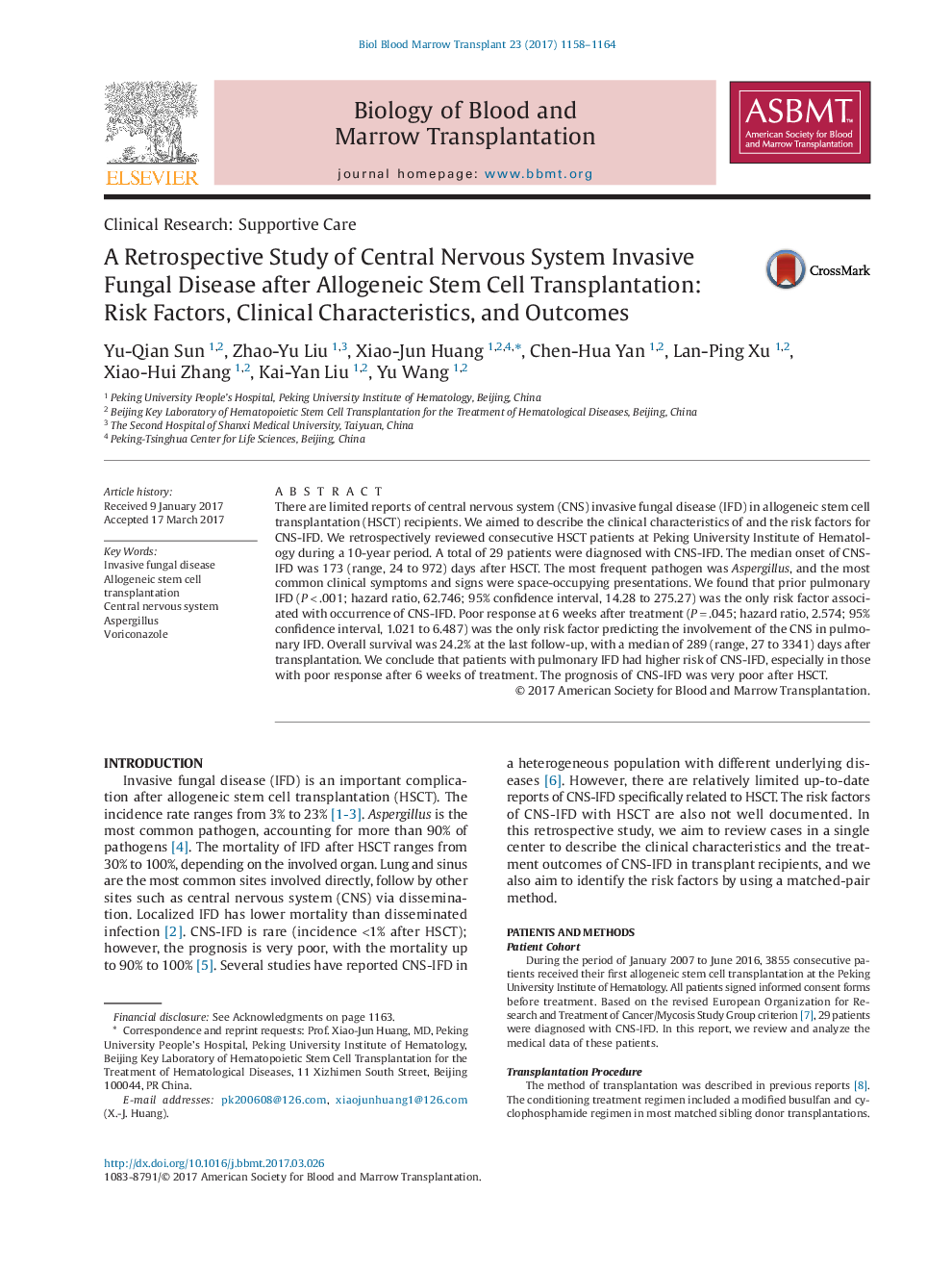| کد مقاله | کد نشریه | سال انتشار | مقاله انگلیسی | نسخه تمام متن |
|---|---|---|---|---|
| 5524353 | 1546239 | 2017 | 7 صفحه PDF | دانلود رایگان |
- Aspergillus was the most frequent pathogen of central nervous system invasive fungal disease after hematopoietic stem cell transplantation. The most frequent clinical manifestation was space-occupying presentation
- Patients with pulmonary invasive fungal disease were at higher risk of central nervous system invasive fungal disease, especially in those with poor response after 6 weeks of treatment
- Patients with central nervous system invasive fungal disease have a poor prognosis
There are limited reports of central nervous system (CNS) invasive fungal disease (IFD) in allogeneic stem cell transplantation (HSCT) recipients. We aimed to describe the clinical characteristics of and the risk factors for CNS-IFD. We retrospectively reviewed consecutive HSCT patients at Peking University Institute of Hematology during a 10-year period. A total of 29 patients were diagnosed with CNS-IFD. The median onset of CNS-IFD was 173 (range, 24 to 972) days after HSCT. The most frequent pathogen was Aspergillus, and the most common clinical symptoms and signs were space-occupying presentations. We found that prior pulmonary IFD (Pâ<â.001; hazard ratio, 62.746; 95% confidence interval, 14.28 to 275.27) was the only risk factor associated with occurrence of CNS-IFD. Poor response at 6 weeks after treatment (Pâ=â.045; hazard ratio, 2.574; 95% confidence interval, 1.021 to 6.487) was the only risk factor predicting the involvement of the CNS in pulmonary IFD. Overall survival was 24.2% at the last follow-up, with a median of 289 (range, 27 to 3341) days after transplantation. We conclude that patients with pulmonary IFD had higher risk of CNS-IFD, especially in those with poor response after 6 weeks of treatment. The prognosis of CNS-IFD was very poor after HSCT.
Journal: Biology of Blood and Marrow Transplantation - Volume 23, Issue 7, July 2017, Pages 1158-1164
